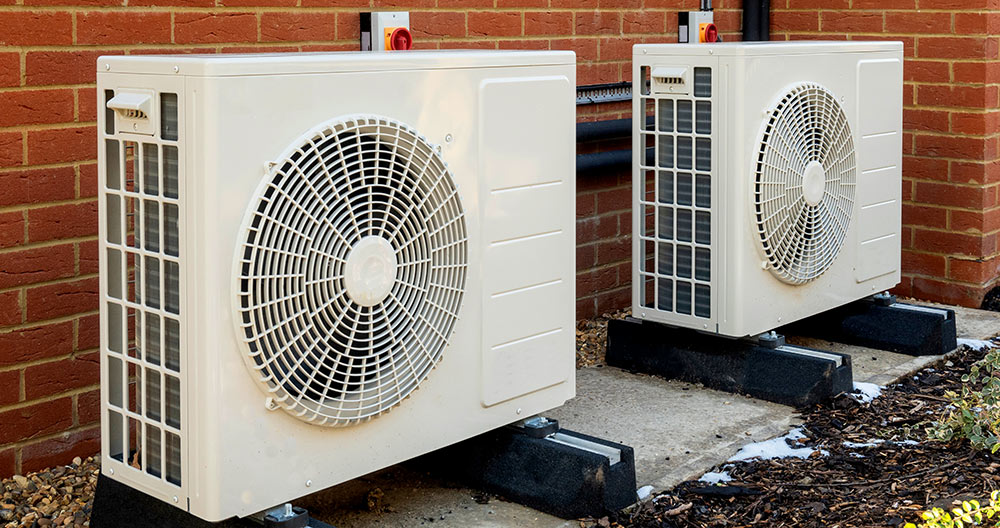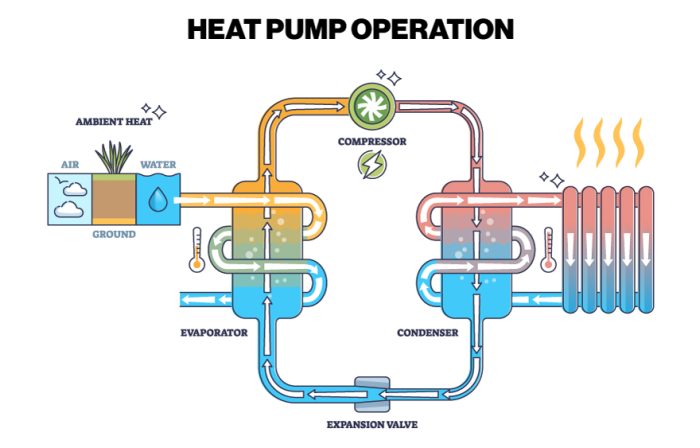What is a Heat Pump?
A heat pump is a type of heating and cooling that moves heat in or out of your home. In winter, it pulls heat from the air or ground outside to warm your home. In summer it removes heat from inside and releases it outside.
Heat pumps are an energy-efficient way to heat and cool a space. Traditional heating and air conditioning systems burn fuel or use electricity, while a heat pump simply transfers existing energy from one place to another. This makes heat pumps more cost-effective and eco-friendly.
With rising energy costs, heat pumps are becoming a popular heating and cooling option for many homeowners. These units can be used place of a traditional split furnace and air conditioning system.
Heat Pump Benefits
- Lowers Energy Bills
- Reduces Carbon Emissions
- Safe (No Combustion)
- Minimal Maintenance
- Quiet Operation
Heat energy exists even in cold air. During cold weather, these systems pump heat from outside your home to the inside to warm your interior.
During the summer, the system removes warm air from your home and pushes it outside, while delivering cooler air inside. Refrigerant runs through coils connected between indoor and outdoor units. As air is pulled into the system it passes over the coils, cooling it down before delivering it to your interior.

Types of Heat Pumps
There are different types of heat pumps, air source, ground source, and water source. In the Wichita area, air and ground are most common.
Air source heat pumps extract energy from the air to heat and cool your home. These can be installed with traditional ductwork, or as a ductless (mini-split) system.
Ground source heat pumps (often called Geothermal systems) extract heat energy from the ground. These systems are more efficient than air source heat pumps because ground temperatures are more consistent than air. They do have a have higher installation cost thought. Both options run entirely on electricity.
The third type of heat pump is water source. The same concepts apply, but the energy source is water. These are not typically installed in Kansas as a reliable year-round water source is need.
Heat pumps can work in temperatures below 0 degrees Fahrenheit. Some models are designed specifically to perform better in more extreme climates. However, one drawback of a heat pump is they are not as efficient when the temperatures nearing zero. This is particularly true of air source models.
In Kansas, it is not uncommon to install a dual fuel system, which would include a gas furnace and an air source heat pump. The net energy savings is still significant. With two heat sources, the system can determine the most efficient option and alternate as needed.
There have been many advancements in heat pump technology over the past decade. Many European countries have had great success in lowering fossil fuel consumption while reducing carbon emissions through heat pump adoption.
2023 Heat Pump Incentives and Rebates
In 2023 the Inflation Reduction Act will provide larger incentives for installing heat pumps. Qualifying heat pumps may be eligible for tax credits up to $2,000, compared to $300 in 2022.
In addition to tax credits, High-Efficiency Electric Home Rebate (HEEHR) program will help low and moderate income households improve efficiency and reduce carbon emissions with rebates. Qualifying homeowners could qualify for up to $8000 in rebates for a heat pump installation. This program requires the installation of ENERGY STAR-certified appliances.
More information about HEEHR and the Inflation Reduction Act heat pump tax credits will be released in 2023.
Reddi Heating and Coolings installs and services heat pumps in the Wichita, KS area.

